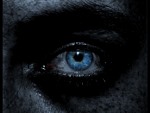Who Was Saint Patrick?
By James Donahue
Today is St. Patrick’s Day all over the world. People in the United States, Japan, Argentina, Russia,
Great Britain and Malaysia are all among the people of the world who are joining the Irish in celebrating the holiday by wearing
green, tipping green ale, holding parades and telling Irish jokes.
So who was Saint Patrick, and how did the day become such an international time of celebration?
Little is really known about St. Patrick. Most school children will say the man was known for driving the snakes
out of Ireland, but that is a strange tale. Ireland, which is a large body of land surrounded by water, has never had snakes.
All that is known about the man was that he was born in Scotland in the year 387, was the son of a Roman family,
and at the age of 16 was kidnapped by Irish marauders who sold him into slavery to a Celtic chieftain named Milchu in the
County of Antrim, Ireland.
In Patrick’s own writings, known as the Confessio, we learn that Milchu was a high priest among the druids.
Thus Patrick learned the Celtic and Druid beliefs. He eventually escaped his captivity, made his way to St. Martin’s
monastery at Tours, and studied Catholicism under St. Germain at Auxerre. After entering the priesthood, St. Germain sent
Patrick back into Ireland to win the “heathen” Celts into Christianity. He died on March 17, 493.
While credited with bringing Catholicism to Ireland and remembered for leading many people to the faith, Patrick
was not declared a saint by the Vatican until 1631. After that time the Irish began holding a religious feast day celebrating
the day of St. Patrick’s death.
Strangely, not all of the Irish are ripe with praise for the ministry of St. Patrick. That country has been
severely divided between the Roman Catholics and the Protestants. Yet for some strange reason, the celebration of St. Patrick’s
Day has grown into a world-wide event. For most it appears to be more of a rite of spring than a remembrance of the missionary
work of a Catholic priest.
The celebration didn’t really get recognized as a major event until after the Irish began migrating in
large numbers to the United States. It was there that parades, the introduction of the shamrock and green beer, and all of
the other frivolous activities associated with the day were introduced.
Some writers suggest that St. Patrick’s Day gave the Irish a special day of national pride. The celebrations
had little if anything to do with religion.
This is clearly evident in the fact that people of all ethnic, religious and political backgrounds all over
the world join with the Irish in tipping one for St. Patrick on March 17.

